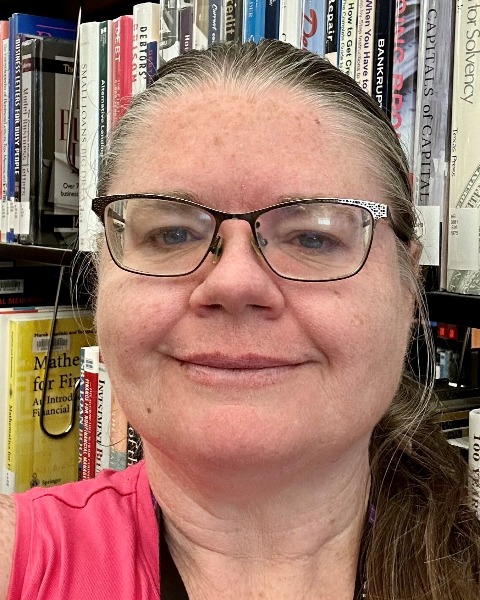Back
Learning Lab
Library Programs and Services
Narrative Learning Theory and Open Educational Resources Across the Grade Levels
Sunday, January 21, 2024
4:00pm – 5:00pm EST
Location: Baltimore Convention Center, 339-340
Level of Participation: High
- RS
Ron Striegel (he/him/his)
Instructor of Teacher Education
San Juan College 
Jennifer L. Goodland
Reference & Instruction Librarian
San Juan College
Content Leader(s)
Primary Contact(s)
Open Educational Resources (OER) are increasingly demanded by state legislatures and college systems weary of high textbook costs, but OER infrastructure is in its growth stage. Politicization of DEI sends educators and school librarians looking for new ways to incorporate inclusive teaching practices. Parents including homeschool audiences are looking for new ways to engage with library storytime. The answer to all these dilemmas may lie in using Narrative Learning Theory frameworks to produce Open Educational Resources.
Narrative Learning Theory (NLT) applies educational concepts to the simple act of storytelling. Librarians and educational professionals can work with multiple storytelling partners and create or purchase low-cost OER to incorporate true inclusion in the classroom from all demographics, including students themselves. NLT-based OER teaches students at any grade level that educational value comes from all around us, from our communities, from within us. Because of this inclusive, community-centered approach to educational content, this kind of OER is a natural fit for indigenous and other communities marginalized by corporate publishing monopolies.
This presentation will use two STEM-based examples: one from a local fiction author in a post-secondary classroom; and a prospective example from an indigenous publisher to be used in early childhood education. This indigenous-led and -centered workshop will include a template for school librarians, academic librarians, and tribal librarians to get from the source material to a complete educational supplemental lesson usable by both professional educators and laypersons. Attendees are encouraged to provide critique and suggestions to improve this framework.
Narrative Learning Theory (NLT) applies educational concepts to the simple act of storytelling. Librarians and educational professionals can work with multiple storytelling partners and create or purchase low-cost OER to incorporate true inclusion in the classroom from all demographics, including students themselves. NLT-based OER teaches students at any grade level that educational value comes from all around us, from our communities, from within us. Because of this inclusive, community-centered approach to educational content, this kind of OER is a natural fit for indigenous and other communities marginalized by corporate publishing monopolies.
This presentation will use two STEM-based examples: one from a local fiction author in a post-secondary classroom; and a prospective example from an indigenous publisher to be used in early childhood education. This indigenous-led and -centered workshop will include a template for school librarians, academic librarians, and tribal librarians to get from the source material to a complete educational supplemental lesson usable by both professional educators and laypersons. Attendees are encouraged to provide critique and suggestions to improve this framework.
Learning Objectives:
- Describe Narrative Learning Theory as it relates to Open Educational Resource generation and indigenous-inclusive storytelling.
- Demonstrate two viable examples of STEM-based OER using NLT.
- Assemble a custom NLT-based OER outline using a template handout. This can use an attendee's personal story, or a favorite book, or a provided early childhood education work.
- Demonstrate the bridge between fiction used in the classroom and STEM-based educational outcomes.
